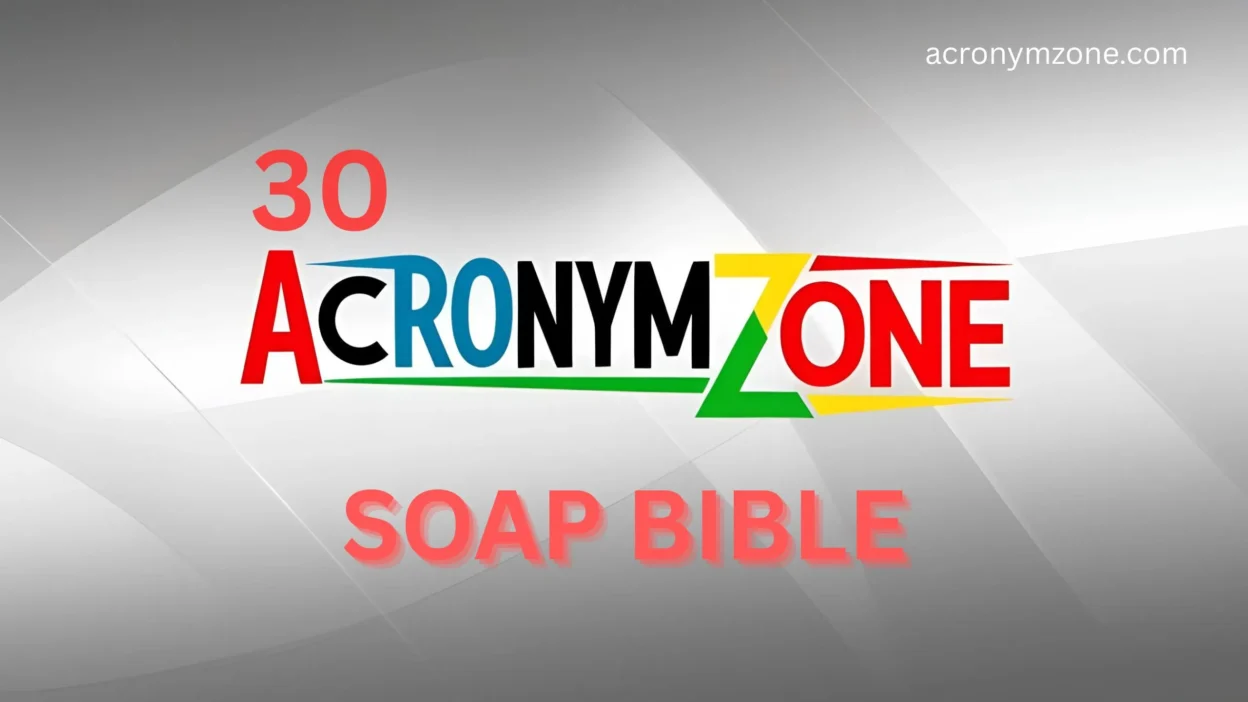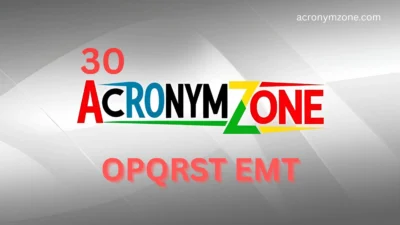When people hear the phrase “SOAP Acronym Bible,” they often think of a structured devotional tool. And they’re right—SOAP is an effective Bible study method that helps readers reflect deeply on Scripture. But beyond just being an acronym, SOAP represents a mindset: one of clarity, discipline, personal connection, and thoughtful action.
Let’s break it down:
- S – Scripture
- O – Observation
- A – Application
- P – Prayer
This powerful format encourages slow, meaningful engagement with God’s Word. But what if you’re looking for alternative ways to structure your Bible study—or express the SOAP process in fresh, memorable formats?
This article introduces 30 acronym-style alternatives to SOAP that convey similar intentions—helping believers grow in faith, reflect with purpose, and act with spiritual wisdom.
📖 What Does SOAP Represent in Bible Study?
The SOAP method is designed to make Bible reading more interactive and applicable:
- Scripture – Choose a specific Bible verse or passage.
- Observation – Ask: What is God saying? What’s happening?
- Application – How does this apply to your life today?
- Prayer – Talk to God about what you’ve learned.
SOAP makes study personal, practical, and spirit-led. However, some learners may connect better with variations depending on their learning style, emotional needs, or spiritual goals.
Let’s explore 30 acronym-based alternatives—each rooted in biblical growth but with different nuances.
✨ 30 SOAP Acronym Bible Alternatives (with Use Guidance)
1. READ – Reflect, Examine, Apply, Devote
Great for beginners.
“Use READ when helping someone new to Bible study.”
2. LIFE – Listen, Interpret, Follow, Express
Focuses on active discipleship.
“I use the LIFE method during group devotions.”
3. HEAR – Highlight, Explain, Apply, Respond
Good for auditory learners.
“Try HEAR when you want to absorb God’s Word more deeply.”
4. FOOD – Find, Observe, Obey, Declare
Emphasizes feeding on the Word.
“FOOD is perfect for youth studies about spiritual nourishment.”
5. GROW – Gather, Read, Observe, Walk
Focuses on spiritual maturity.
“GROW works well in mentoring relationships.”
6. PATH – Pray, Analyze, Trust, Heed
Good for decision-making devotionals.
“When making life choices, I follow the PATH acronym.”
7. WORD – Write, Observe, Reflect, Do
Highlights journaling and obedience.
“WORD keeps me accountable to act on what I read.”
8. LOVE – Learn, Observe, Value, Engage
Focuses on relationship with God.
“LOVE is great for heart-centered devotions.”
9. SEED – Study, Examine, Engage, Disciple
For evangelism and outreach studies.
“We use SEED in missions prep classes.”
10. WALK – Watch, Apply, Listen, Kneel
Represents a humble walk with God.
“I use WALK in early morning devotionals.”
11. RISE – Read, Investigate, Submit, Exalt
Emphasizes surrender and worship.
“RISE deepens worship during morning quiet time.”
12. ANCHOR – Ask, Note, Commit, Hear, Obey, Reflect
For staying grounded in Scripture.
“ANCHOR is helpful when I feel spiritually unsettled.”
13. ROOT – Read, Observe, Obey, Trust
Builds spiritual stability.
“Use ROOT when teaching new believers.”
14. SHAPE – Study, Hear, Apply, Pray, Encourage
Blends learning and community.
“SHAPE is great for small groups.”
15. ABIDE – Ask, Believe, Interpret, Do, Exalt
John 15 inspired; ideal for spiritual intimacy.
“ABIDE helps me stay connected to Jesus daily.”
16. TRUTH – Think, Reflect, Understand, Trust, Hear
Focuses on discernment and clarity.
“TRUTH is helpful for theological study.”
17. FAITH – Focus, Ask, Interpret, Trust, Hope
Ideal for tough seasons.
“When struggling, I lean on FAITH.”
18. LIGHT – Learn, Identify, Grow, Heed, Trust
Symbolizes divine guidance.
“Use LIGHT when teaching kids about following God’s path.”
19. GRACE – Gather, Read, Apply, Confess, Encourage
Adds emotional and relational dimensions.
“GRACE is powerful for journaling through hardship.”
20. BLESS – Believe, Learn, Examine, Serve, Share
Great for mission-focused devotions.
“BLESS reminds me my faith isn’t just for me—it’s to share.”
21. ARMOR – Apply, Reflect, Meditate, Obey, Rest
Inspired by Ephesians 6.
“ARMOR is perfect for spiritual warfare themes.”
22. PSALM – Pray, Study, Apply, Listen, Meditate
A poetic format, especially for Psalms or Proverbs.
“PSALM brings rhythm to my devotional time.”
23. GRIP – Gather, Reflect, Interpret, Practice
Helps “get a grip” on Scripture.
“Use GRIP when feeling spiritually scattered.”
24. QUIET – Question, Understand, Interpret, Embrace, Trust
Reflective, contemplative study.
“QUIET is great for retreat or solitude settings.”
25. FOCUS – Find, Observe, Clarify, Understand, Serve
For clarity in learning.
“FOCUS sharpens how I read complex passages.”
26. DAILY – Discern, Apply, Inquire, Listen, Yield
Perfect for everyday habits.
“DAILY keeps my routine devotional alive.”
27. REST – Read, Engage, Surrender, Trust
Encourages letting go and letting God.
“REST helps me reset when I’m anxious.”
28. FIRM – Find, Internalize, Respond, Meditate
For building unshakable faith.
“Use FIRM in studies on perseverance or trust.”
29. CLEAR – Choose, Listen, Examine, Apply, Reflect
Good for mental clarity.
“CLEAR is my go-to when I need direction.”
30. HOPE – Hear, Observe, Pray, Expect
Uplifting and future-minded.
“HOPE keeps me encouraged in dark times.”
🧭 Choosing the Right Acronym for Your Bible Study
Just like SOAP, these alternatives serve different styles and seasons:
- Use READ, FOOD, or GROW for beginners.
- Pick TRUTH, ANCHOR, or FIRM when teaching theology or stability.
- Try GRACE, REST, or QUIET when processing emotions or burnout.
- Select LOVE, BLESS, or SEED for mission or outreach themes.
- Use ABIDE, LIGHT, or WALK for intimacy and daily connection with God.
Whether you’re visual, auditory, structured, or free-flowing, there’s an acronym that fits your spiritual rhythm.
✅ Conclusion
The SOAP method remains a beautiful and effective way to study the Bible, but that doesn’t mean it’s one-size-fits-all. These 30 alternatives offer different ways to connect with Scripture—each one inviting you to listen more deeply, reflect more personally, and live more faithfully.
The method matters less than the heart behind it. So whether you SOAP, WALK, or GROW—do it with sincerity, consistency, and a desire to draw closer to God.
Now, grab your Bible and try a new method this week—you might discover a fresh way to hear God speak.




